The main reason Pu-erh is special and different from other types of tea is that it has been fully oxidized. Once you learn how to brew Pu-erh tea properly, it can easily become your favorite drink on a daily basis.
Over time, the tea is fermented and ripened, giving it a uniquely intense, complex flavor with a deep color once brewed. Raw Pu-erh tea, with its sweeter, smooth taste and the lighter color is also much loved by tea enthusiasts the world over.
I’m passionate about this remarkable tea. In this article, I’d like to share with you the secrets of brewing the perfect cup.
I’ll take you through two different brewing methods. The first is a familiar western style way of brewing, the second is a more involved eastern method.
Contents
How to Prepare Pu-Erh Tea – the Western Method
This method is quite simple and I recommend it for everyone, especially for those who are new to Pu-erh. Whether it’s riped or raw, loose-leaf or a cake, the procedure is quite similar.
Traditionalists do not add anything to Pu-erh tea, but some people prefer to drink it with a little milk. A ripe Pu-erh, when made with milk, has a beautiful rich color. A little like a chocolate drink.
The milk gives the tea a rounder flavor profile, softening the taste on the tongue and leaving a pleasantly sweet aftertaste. It really is a completely different drink when you make Pu-erh with milk.
The same goes for adding sugar. It’s not traditional, but tea is a personal drink and you should make it how you like it.
Before adding anything, my advice would be to try the tea on its own and experience its pure flavor and aroma. I’d also encourage you to brew your cup of Pu-erh tea mindfully.
How to Brew Pu-erh Tea Cake
This is the most popular method of how to prepare ripe & aged Pu-erh cakes the Western Way. Focus on the color, the aromas, and the flavor without allowing anything to distract you.
Note: Use only a freshwater, preferably filtered cold water. Bring it to a rolling boil- about 212°F.
The process for one cup of tea:
- Warm your teapot and cup by pouring a little boiling water into the pot. Swirl it around for a few seconds then pour it into the cup.
- After a few seconds, you can discard this water. Your teapot and cup will now be warm.
- Take your Pu-erh cake and remove about a teaspoonful of the leaves.
- Put the leaves into the teapot and cover with about 9 ounces of boiling water.
- Cover the pot with the lid and allow the tea to steep for about five minutes. Use a timer if you’d like to.
- Using a basket strainer over the rim of your cup, pour the tea into the cup. Notice the beautiful aroma and color of the tea. This is part of the pleasure which begins before you even take your first sip.
- If you plan on having a second cup, we advise you to use the type of strainer that sits inside the teapot. After five minutes, remove the strainer and leaves from the pot before you pour your first cup. This is to prevent the tea leaves in the pot from continuing to steep, resulting in a bitter second cup.
How to Brew Fresh Raw Pu-erh Tea
This type of Pu-erh has a delicate, smooth flavor. It’s brewed in a similar way to a green or white tea with lower water temperature and shorter brewing time. This prevents it from developing a bitter, sharp taste.
Note: Again, use only a freshwater, preferably filtered water.
The process for preparing a cup of Pu-erh tea:
- Warm your teapot and cup well. Your brew will be at a slightly lower temperature than for fermented Pu-erh, so this is important to keep your tea hot.
- Bring your water to just below a boil- about 190°F.
- Remove a teaspoon of the tea from the cake and put it into the pot. Pour the almost-boiling water over the top.
- Replace the teapot lid and allow the tea to steep for just three minutes. Discard the leaves at once.
How to Brew Pu-erh Sachets
Sachets can be brewed directly in the cup. Pour boiling (212°F) water directly over the sachet. Steep for five minutes, then remove the sachet.
How to Brew Loose-Leaf Pu-erh Tea
Loose-leaf Pu-erh is prepared in the same way as ripe, aged, Pu-erh. Measure a teaspoonful (about three grams) of leaves into the teapot.
The methods outlined above are primarily “western-style” brewing methods. They use fewer tea leaves and longer infusion time.
How to Brew Pu-Erh Tea the Chinese (Eastern) Way
The traditional Chinese (gong-fu) brewing style uses a lot of leaves in just a small amount of water.
I’ve made a video on how to prepare and brew your Pu-erh tea by the Chinese method. This method is surely more complex, but it’s the proper way to prepare your Pu-erh tea like a master.
Don’t like videos? Continue reading the guide and follow the steps carefully.
About This Method
The flavor is extracted from tea leaves at different rates. This depends on the temperature of the water and how long the leaves are exposed to it for.
In the gong-fu method, parts of the flavor spectrum are extracted at different times, allowing you to taste the tea in all its nuances.
The flavor is revealed gradually and by the end, a more intense flavor is achieved than with western-style brewing. What you’re doing is having little shots of the tea at many different stages of its brewing evolution.
What You’ll Need
Your basic requirement, instead of a teapot and mug, is a gaiwan. This is a traditional Chinese cup with a lid to cover it. Don’t get one that’s too big. You’re looking for espresso-size utensils here.
Remember, you’re going to be drinking multiple cups of tea at one sitting. If your gaiwan is porous clay, remember to brew only one type of tea in it. If you intend using different teas, then you’re better off with one that’s glazed.
Brewing Pu-erh Tea the Eastern Way
Following the traditional Chinese method, the Pu-erh evolves from a light cup of tea into a dark and rich experience.
Here’s a step-by-step process on how to brew and prepare your Pu-erh tea correctly:
- Put some tea in your gaiwan. The whole leaf is preferable here.
- Fill about a quarter of the cup with leaves (it will expand). Heat your water between 190°F and boiling.
- Your first pouring is to rinse, clean and hydrate the tea leaves, so this is discarded immediately after pouring.
- Pour some more boiling water over the tea for your first shot.
- Brew for 5 seconds, then 7 for your second shot, then 9 for the next, and so on.
- Pour the tea out by sliding the lid back a tiny bit to leave a tiny gap between the lid and the side of the cup.
- Steady the lid with one finger and the gaiwan’s lid with the others. Pour the tea into the accompanying cup.
Pu-Erh Tea Consummation
Experience your tea with the focus and attention that good tea deserves. Notice the aroma of the leaves when dry, after the rinse, and between each brewing.
Sip the tea and take note of any creaminess or other sensations. Notice the aftertaste. Each shot will reveal different flavors and aromas.
Continue until the tea gives out and becomes bitter or too weak. Some teas will allow up to fifteen steepings, but others only about five. Some aged Pu-erh’s will keep giving a flavor for forty steeps!
The Best Time to Drink Pu-erh Tea
Some people use Pu-erh tea for weight loss. It is said to increase the speed of digestion and help with fat burning. If you’re using it for this purpose, it’s important to drink it at the correct times.
For best results, have a cup of Pu-erh tea after a meal to help remove excess oil and difficult to digest fats.
If you have the tea just before a meal it cleans up residues in your stomach, making you hungrier and causing you to eat more.
How Many Cups of Pu-erh Should You Drink?
Pu-erh tea contains caffeine. Some people wrongly believe that this type of tea contains less caffeine than the other tea types.
In fact, the caffeine content in your cup depends on a lot of factors, including the temperature of the brewing water, the duration of brewing, and the Pu-erh tea type specifics.
Basically, the higher the temperature and the longer the brewing time are, the caffeine content per cup increases. Keep that in mind when you prepare your cup of tea.
In terms of quantity, different people have different limits on how much caffeine they may take. However, most people can consume five cups a day without experiencing any side effects from the caffeine.
In Conclusion
As you can see, there are different ways to enjoy your Pu-erh. But remember to use a whole lot of leaves and several shorter infusions whenever possible. This will reveal the nuances of this very special tea.
Begin with a subtle flavor and light color in the cup and continue through to a rich, dark experience. Observe how the tea evolves through to full extraction.
When time is short and you need to be somewhere fast, use your convenient bigger brewing pot for a quicker cup of tea with the full flavor profile in just one or two infusions.

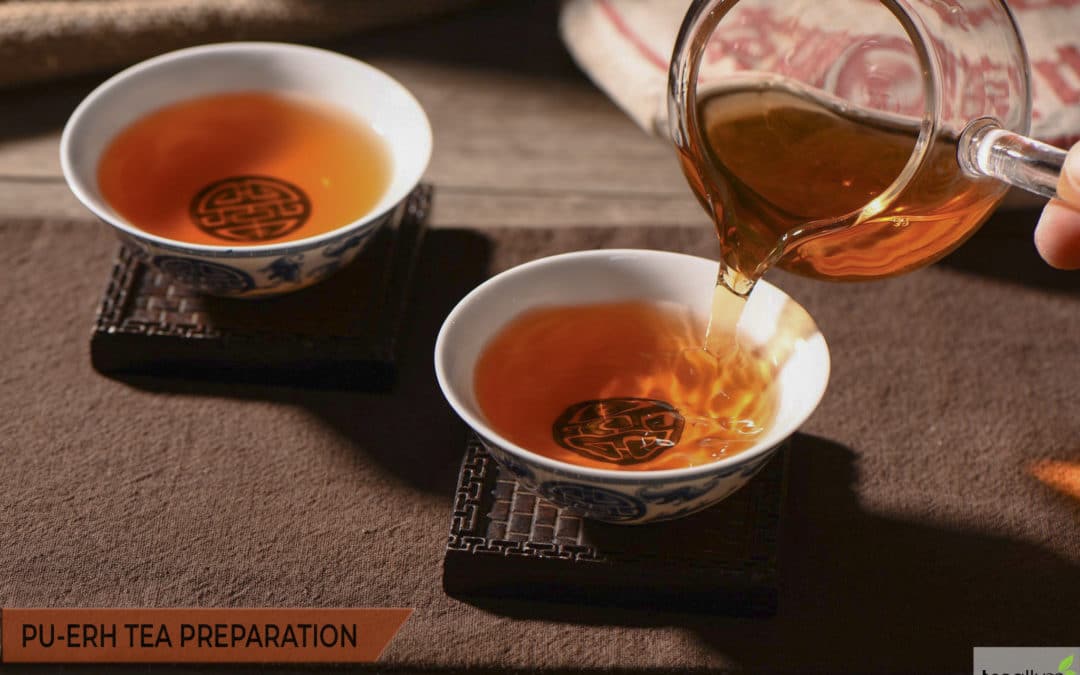
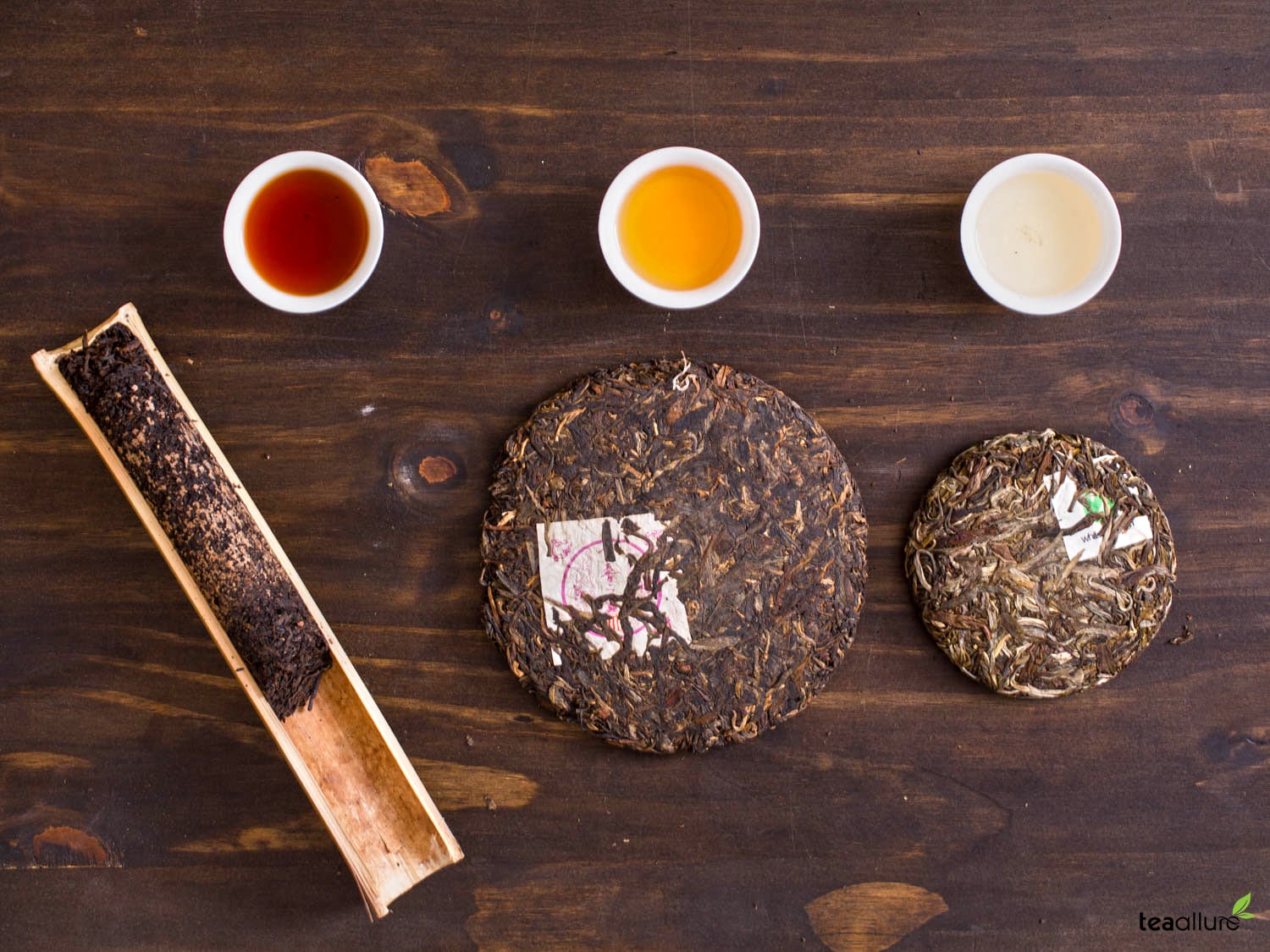
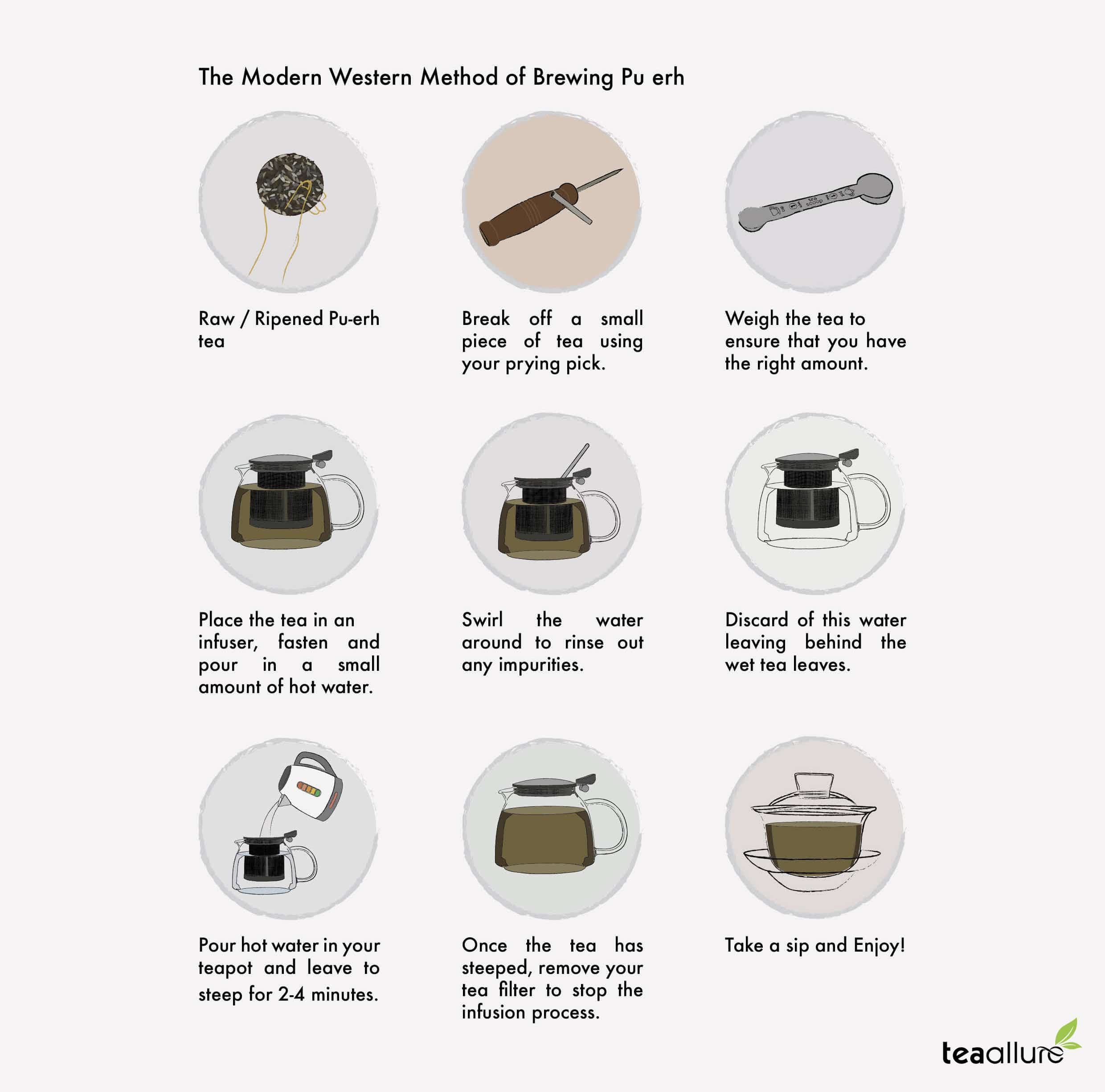
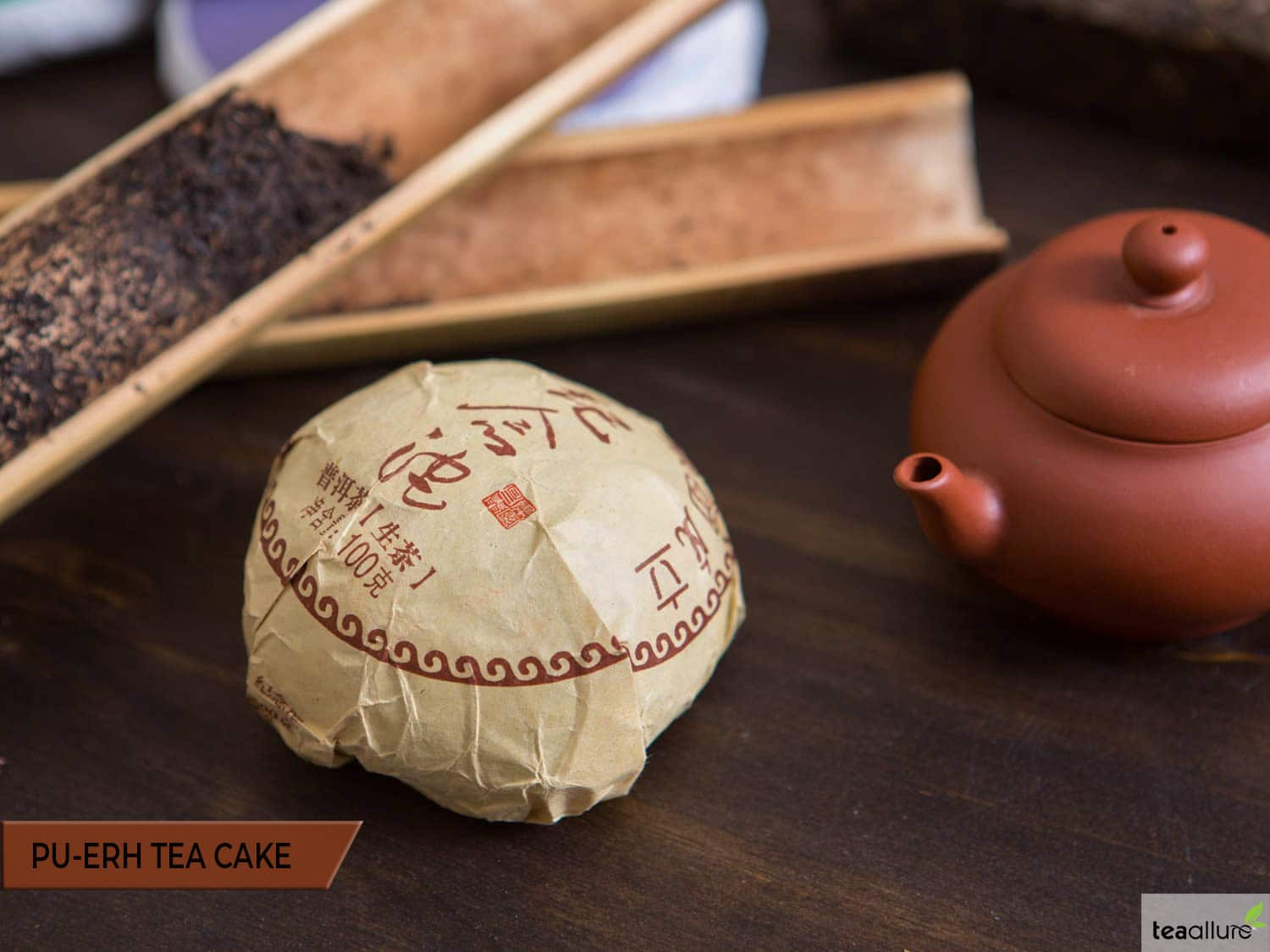

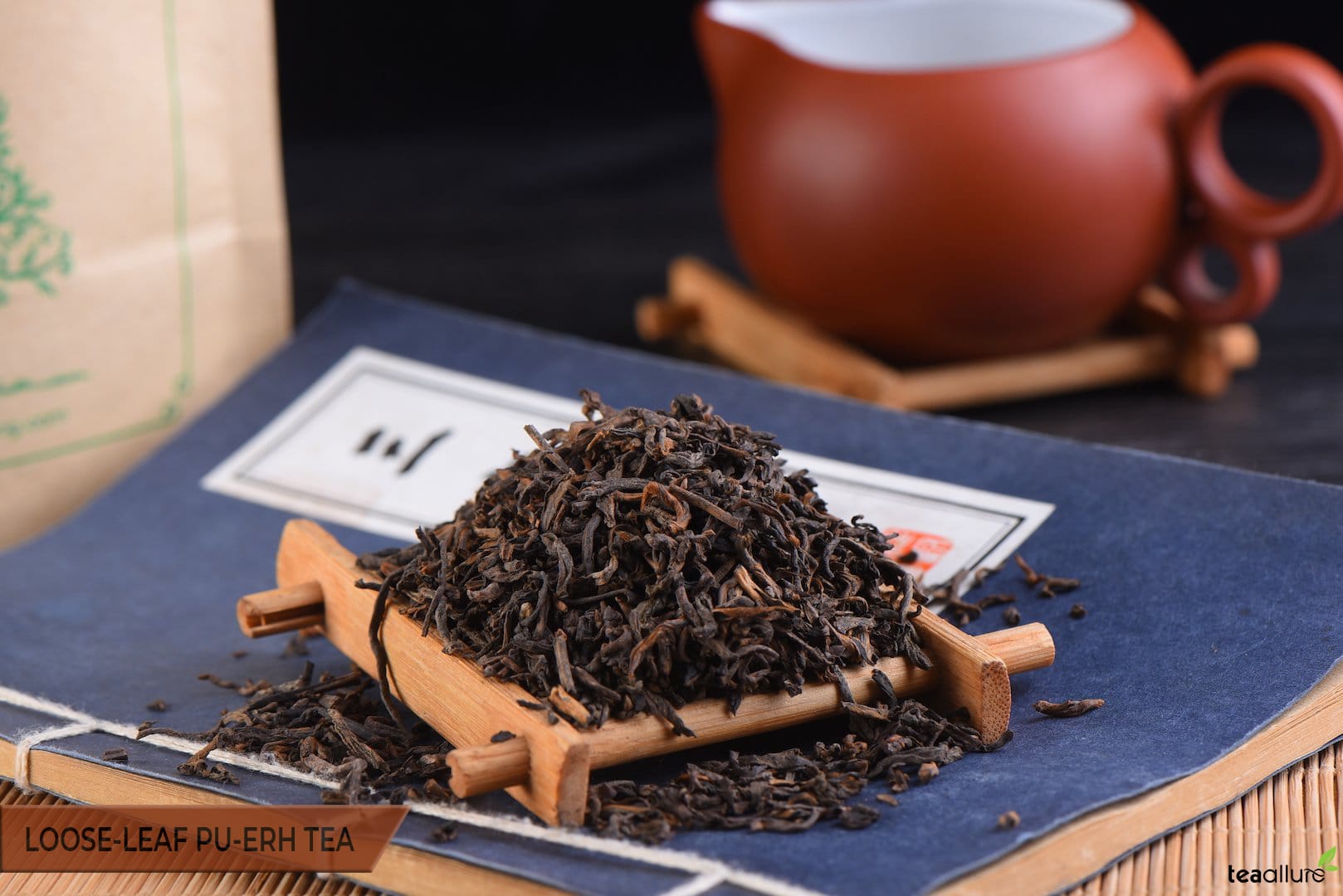
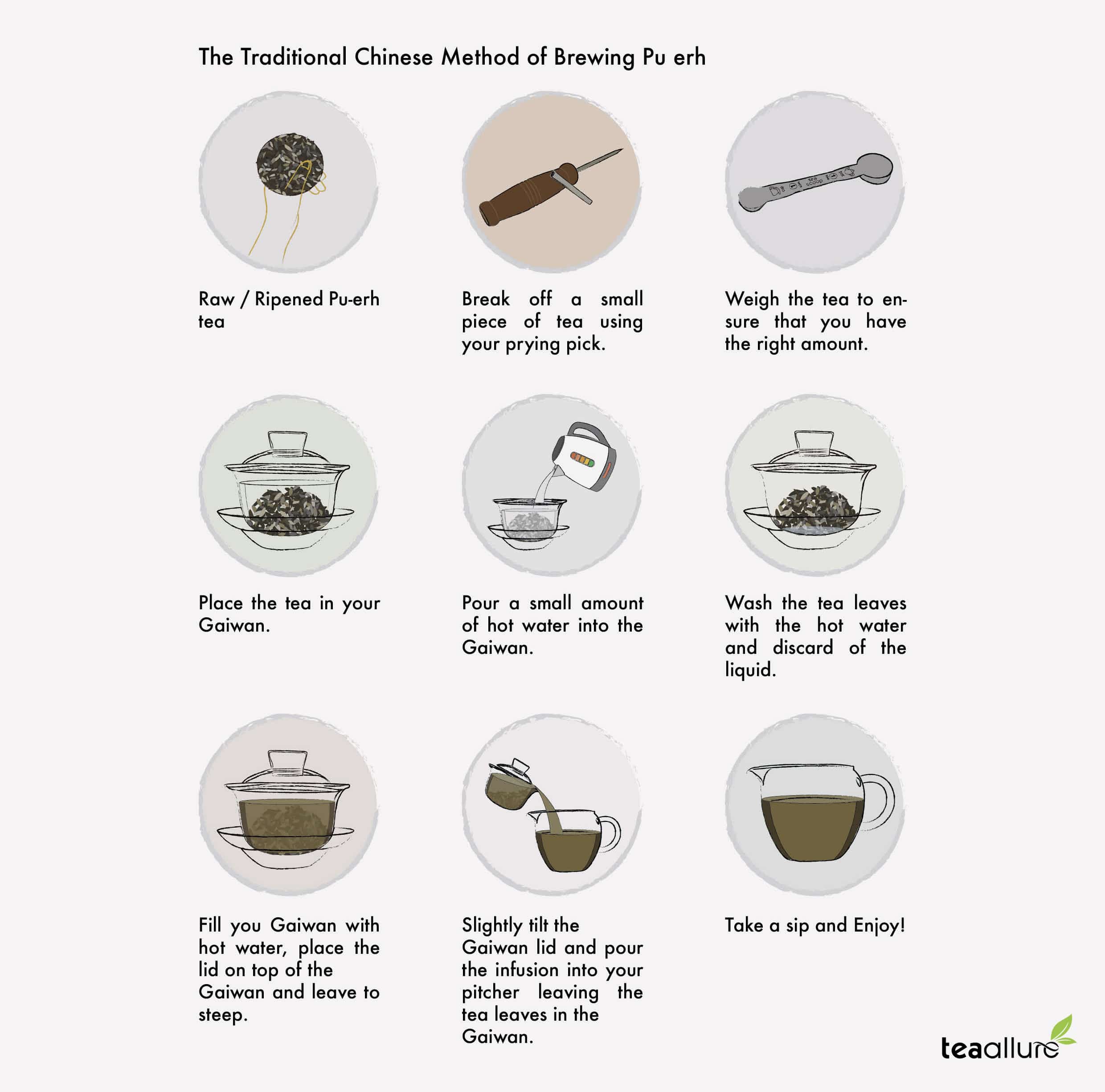
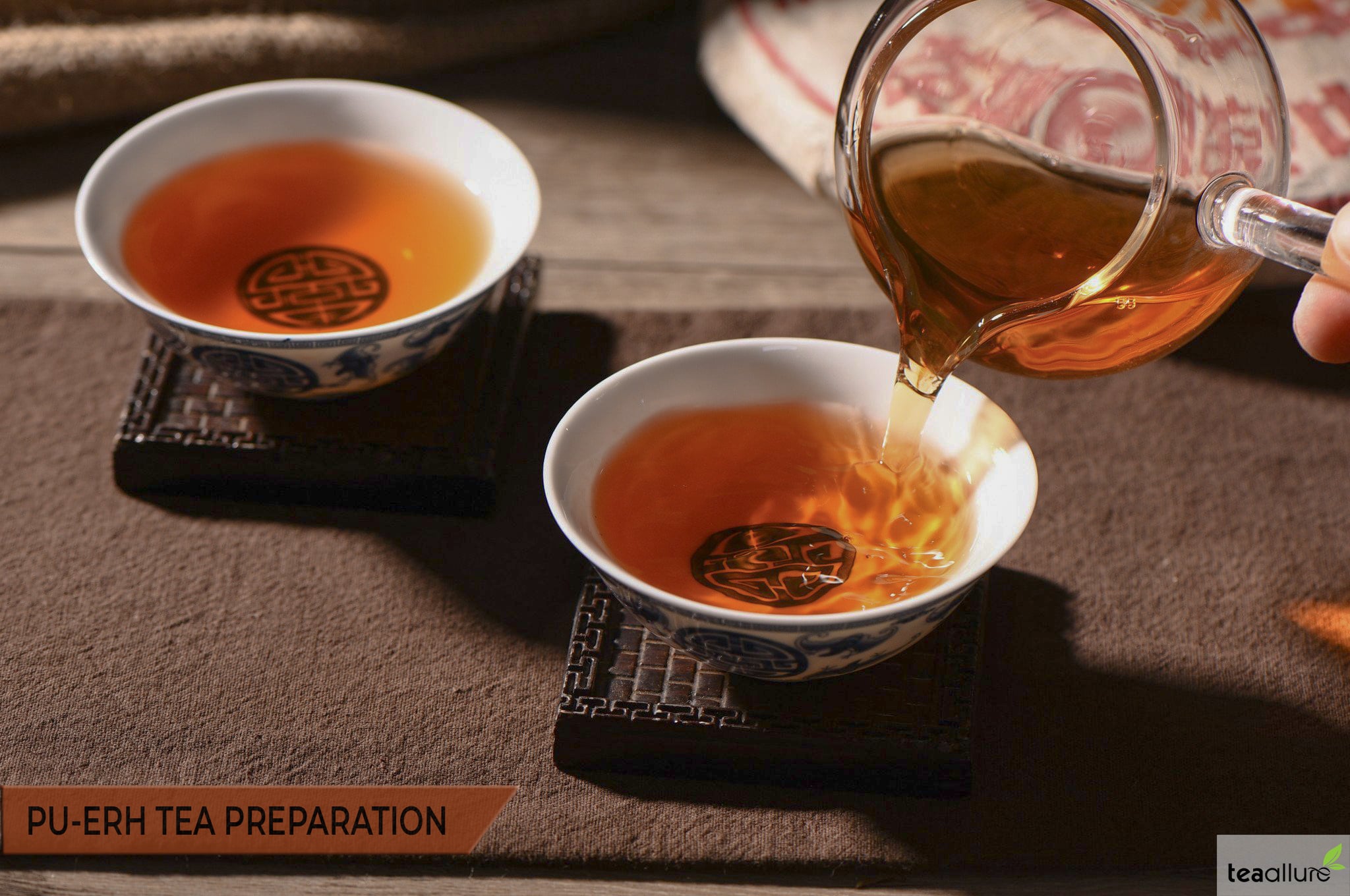
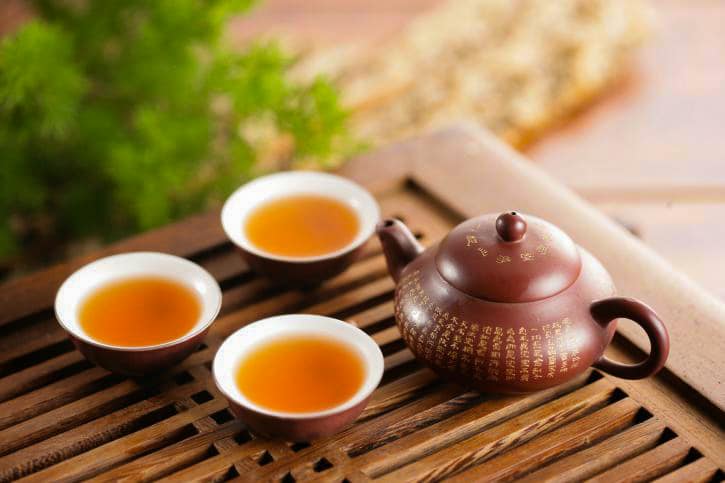

 Hi, my name is Abigail Bradley, founder of TeaAllure. Tea is my passion, and this blog is dedicated to provide all the information for this marvelous gift of nature.
Hi, my name is Abigail Bradley, founder of TeaAllure. Tea is my passion, and this blog is dedicated to provide all the information for this marvelous gift of nature.